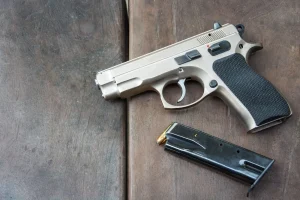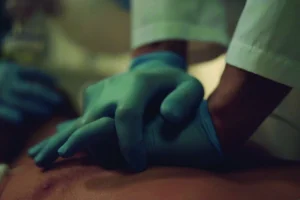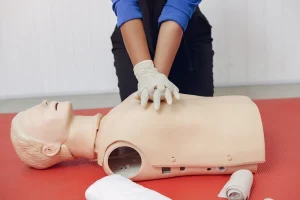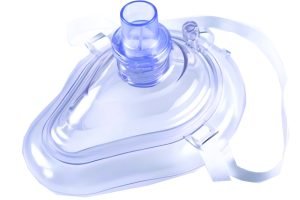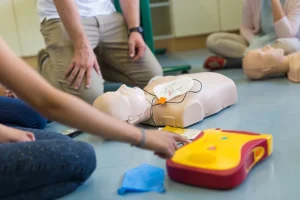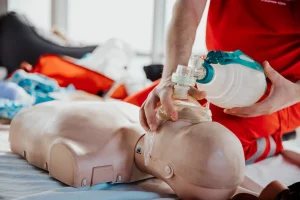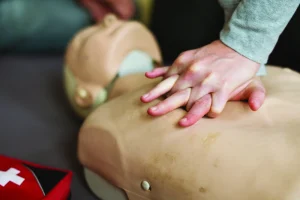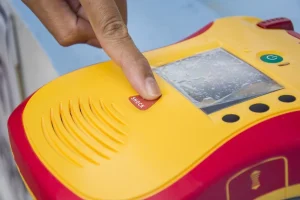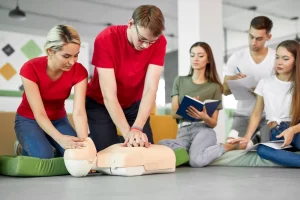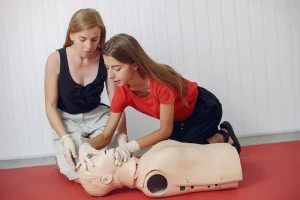What Is AED?
An Automatic External Defibrillator (AED) is a lightweight, portable device that delivers an electric shock to those who suffer from sudden cardiac arrest (SCA). This condition occurs when a person’s heart stops beating unpredictably. The shock given through an AED helps resume the heartbeat or recover its normal rhythm in case of arrhythmia, a state of irregular heartbeat.
Most cardiac arrests result from ventricular fibrillation (VF), a rapid, unsynchronized heartbeat rhythm that originates from the lower chambers of the heart. AEDs are a tool for responding to such medical emergencies, including CPR. Studies have shown that the device can correctly detect heart rhythm 90% of the time, making it a highly useful tool for determining whether an electric shock should be delivered.
A person faced with cardiac arrest loses their chances of survival by 10% per minute from the time it occurred. Therefore, they must be defibrillated within minutes using an AED. Yet, it doesn’t mean the person cannot be saved without an AED. You can perform CPR without any medical device and save the individual.
As portable devices, AEDs can be used by anyone anywhere so that you can immediately respond to events such as sudden cardiac arrests (SCA). They can be used on an infant, a child, and adults. You’d find them in all first-response vehicles, such as ambulances, fire brigades, and law-enforcement cars, as well as in public places such as shopping malls, airplanes, airports, convention centers, schools, hotels, sports venues, and so on.
How to Use an AED?
If you wish to learn the use of AEDs, follow these steps:
Step 1: Switch on the Device
Place the AED base unit near the patient’s head and switch it on. Some models turn on automatically as you lift the lid, while others require pressing a button.
Step 2: Apply the AED Pads
Expose the patient’s chest and remove any moisture. Then, position a pad on the right side of the bare chest, right below the collarbone, and put the other pad on the left-hand side. If the pads aren’t connected to the AED, connect them.
If two trained rescuers are available, one should perform CPR while the other prepares the AED device. Under no circumstances should CPR be delayed while preparing the AED device. Place the pads around the hands of the rescuer performing CPR. CPR can pause as soon as the device is ready to examine the patient’s heart rhythm.
Step 3: Apply the Electric Shock
When the AED device examines the heart rhythm and delivers the shock, make sure no one is in contact with the patient or their clothes. This is referred to as clearing the patient. A trained rescuer will quickly run their eyes from the patient’s head to toe and loudly call out ‘everybody clear’ to ensure no one touches the patient. The rescuer then presses the button to deliver the shock.
Who Can Use an AED?
While AEDs are designed for the public’s use, trained nonmedical personnel such as the police, flight attendants, fire service personnel, security guards, and other rescuers can use them.
Even though you don’t require formal training to use an AED, and most devices come with audible voice prompts to guide you, practical training will significantly improve your confidence and comfort level while saving a life.
ABC Health and Safety Training has classes in Vacaville, California, to teach the proper use of AED and CPR. We train healthcare providers and laypersons alike. Contact us if you’d like more information.





